
Machine Learning with Swift
¥73.02
Leverage the power of machine learning and Swift programming to build intelligent iOS applications with ease About This Book ? Implement effective machine learning solutions for your iOS applications ? Use Swift and Core ML to build and deploy popular machine learning models ? Develop neural networks for natural language processing and computer vision Who This Book Is For iOS developers who wish to create smarter iOS applications using the power of machine learning will find this book to be useful. This book will also benefit data science professionals who are interested in performing machine learning on mobile devices. Familiarity with Swift programming is all you need to get started with this book. What You Will Learn ? Learn rapid model prototyping with Python and Swift ? Deploy pre-trained models to iOS using Core ML ? Find hidden patterns in the data using unsupervised learning ? Get a deeper understanding of the clustering techniques ? Learn modern compact architectures of neural networks for iOS devices ? Train neural networks for image processing and natural language processing In Detail Machine learning as a field promises to bring increased intelligence to the software by helping us learn and analyse information efficiently and discover certain patterns that humans cannot. This book will be your guide as you embark on an exciting journey in machine learning using the popular Swift language. We’ll start with machine learning basics in the first part of the book to develop a lasting intuition about fundamental machine learning concepts. We explore various supervised and unsupervised statistical learning techniques and how to implement them in Swift, while the third section walks you through deep learning techniques with the help of typical real-world cases. In the last section, we will dive into some hard core topics such as model compression, GPU acceleration and provide some recommendations to avoid common mistakes during machine learning application development. By the end of the book, you'll be able to develop intelligent applications written in Swift that can learn for themselves. Style and approach A comprehensive guide that teaches how to implement machine learning apps for iOS from scratch
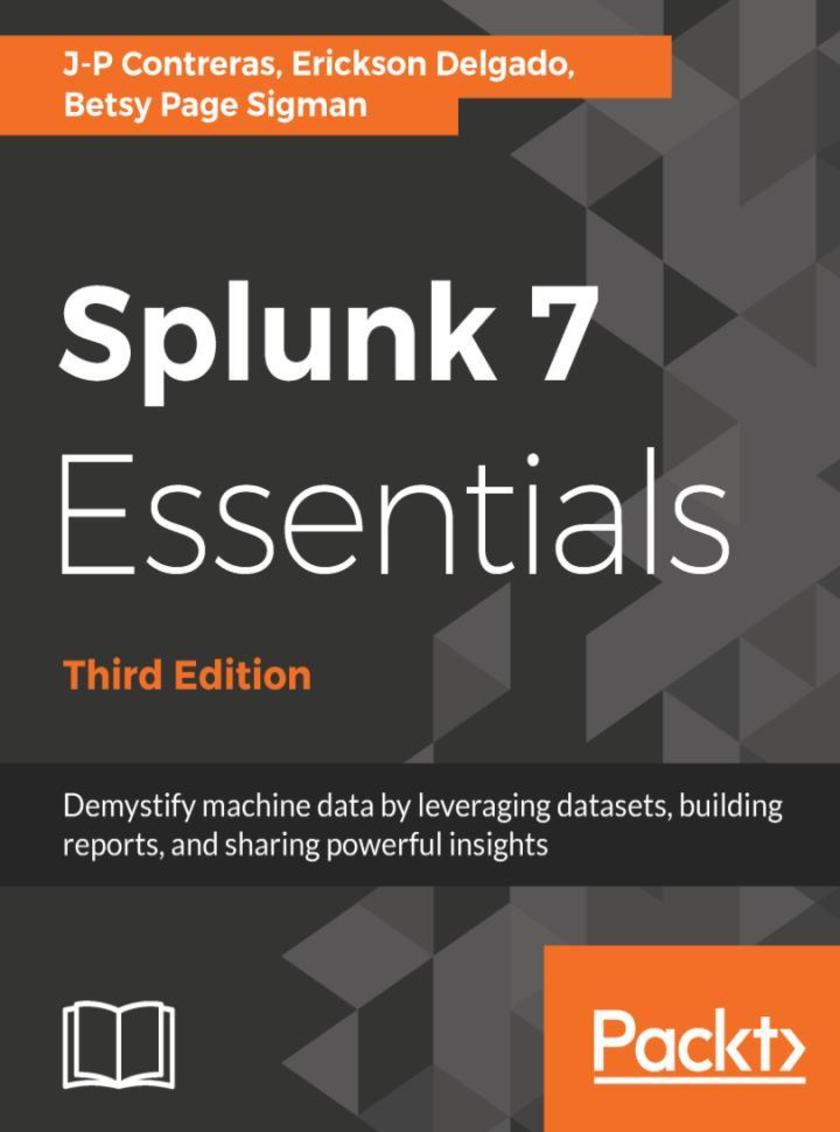
Splunk 7 Essentials - Third Edition
¥73.02
Transform machine data into powerful analytical intelligence using Splunk About This Book ? Analyze and visualize machine data to step into the world of Splunk! ? Leverage the exceptional analysis and visualization capabilities to make informed decisions for your business ? This easy-to-follow, practical book can be used by anyone - even if you have never managed data before Who This Book Is For This book is for the beginners who want to get well versed in the services offered by Splunk 7. If you want to be a data/business analyst or want to be a system administrator, this book is what you want. No prior knowledge of Splunk is required. What You Will Learn ? Install and configure Splunk for personal use ? Store event data in Splunk indexes, classify events into sources, and add data fields ? Learn essential Splunk Search Processing Language commands and best practices ? Create powerful real-time or user-input dashboards ? Be proactive by implementing alerts and scheduled reports ? Tips from the Fez: best practices using Splunk features and add-ons ? Understand security and deployment considerations for taking Splunk to an organizational level In Detail Splunk is a search, reporting, and analytics software platform for machine data, which has an ever-growing market adoption rate. More organizations than ever are adopting Splunk to make informed decisions in areas such as IT operations, information security, and the Internet of Things. The first two chapters of the book will get you started with a simple Splunk installation and set up of a sample machine data generator, called Eventgen. After this, you will learn to create various reports, dashboards, and alerts. You will also explore Splunk's Pivot functionality to model data for business users. You will then have the opportunity to test-drive Splunk's powerful HTTP Event Collector. After covering the core Splunk functionality, you'll be provided with some real-world best practices for using Splunk, and information on how to build upon what you've learned in this book. Throughout the book, there will be additional comments and best practice recommendations from a member of the SplunkTrust Community, called "Tips from the Fez". Style and approach This fast-paced, example-rich guide will help you analyze and visualize machine data with Splunk through simple, practical instructions and recommendations.
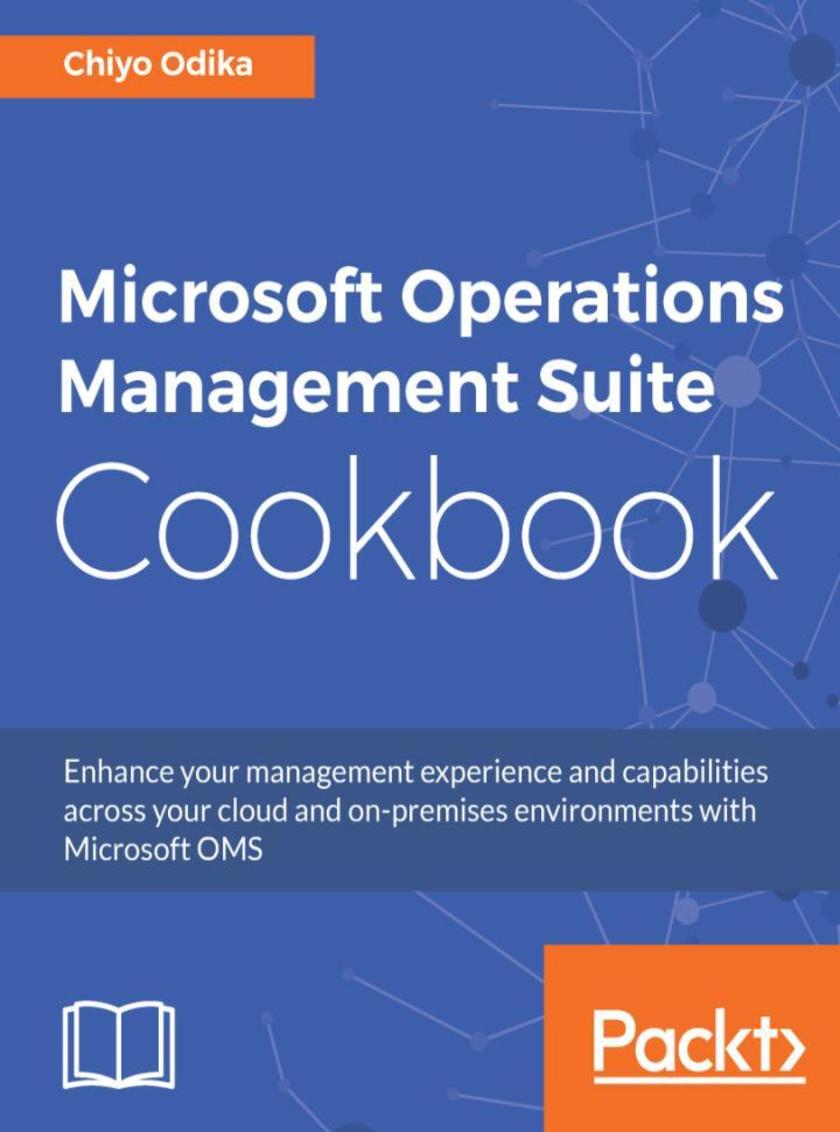
Microsoft Operations Management Suite Cookbook
¥73.02
Manage on-premises and cloud IT assets from one console About This Book ? Empower yourself with practical recipes to collect and analyze operational insights on Windows and Linux servers in your on premises datacenters and in any public cloud environments such as Azure and AWS. ? Build capabilities through practical tasks and techniques to collect and analyze machine data ? Address business challenges and discover means to accommodate workloads and instances in a low cost manner Who This Book Is For This book is written for the IT professional and general reader who is interested in technology themes such as DevOps, Big Data Analytics, and digital transformation concepts. Azure and other cloud platform administrators, cloud professionals, and technology analysts who would like to solve everyday problems quickly and efficiently with hybrid management tools available in the Microsoft product ecosystem will derive much value from this book. Prior experience with OMS 2012 would be helpful. What You Will Learn ? Understand the important architectural considerations and strategies for OMS ? Use advanced search query commands and strategies to derive insights from indexed data ? Make use of alerting in OMS such as alert actions, and available options for the entire lifecycle of the alert ? Discover some practical tips for monitoring Azure container service containers and clusters using OMS ? Review and use the backup options available through the Azure backup service, as well as data recovery options available through Azure Site Recovery (ASR) ? Understand how to advance important DevOps concepts within your IT organization ? Learn how to manage configurations and automate process In Detail Microsoft Operations Management Suite Cookbook begins with an overview of how to hit the ground running with OMS insights and analytics. Next, you will learn to search and analyze data to retrieve actionable insights, review alert generation from the analyzed data, and use basic and advanced Log search queries in Azure Log Analytics. Following this, you will explore some other management solutions that provide functionality related to workload assessment, application dependency mapping, automation and configuration management, and security and compliance. You will also become well versed with the data protection and recovery functionalities of OMS Protection and Recovery, and learn how to use Azure Automation components and features in OMS. Finally you will learn how to evaluate key considerations for using the Security and Audit solution, and working with Security and Compliance in OMS. By the end of the book, you will be able to configure and utilize solution offerings in OMS, understand OMS workflows, how to unlock insights, integrate capabilities into new or existing workflows, manage configurations, and automate tasks and processes. Style and approach This is a recipe based guide where early chapters introduce the main concepts and key capabilities, and the later chapters delve into more advance concepts.

Phoenix Web Development
¥73.02
Learn to build a high-performance functional prototype of a voting web application from scratch using Elixir and Phoenix About This Book ? Build a strong foundation in Functional-Programming techniques while learning to build compelling web applications ? Understand the Elixir Concurrency and parallelization model to build high-performing blazingly fast applications ? Learn to test, debug and deploy your web applications using Phoenix framework Who This Book Is For This book is for people with a basic knowledge of Elixir, who want to start building web applications. Prior experience with web technologies is assumed. What You Will Learn ? Learn Phoenix Framework fundamentals and v1.3's new application structure ? Build real-time applications with channels and presence ? Utilize GenServers and other OTP fundamentals to keep an application stable ? Track users as they sign in and out of chat with Phoenix’s built-in presence functionality ? Write your own database interaction code that is safe, bug-free, and easy to work with ? Explore testing and debugging methodologies to understand a real software development lifecycle for a Phoenix application ? Deploy and run your Phoenix application in production In Detail Phoenix is a modern web development framework that is used to build API’s and web applications. It is built on Elixir and runs on Erlang VM which makes it much faster than other options. With Elixir and Phoenix, you build your application the right way, ready to scale and ready for the increasing demands of real-time web applications. This book covers the basics of the Phoenix web framework, showing you how to build a community voting application, and is divided into three parts. In the first part, you will be introduced to Phoenix and Elixir and understand the core terminologies that are used to describe them. You will also learn to build controller pages, store and retrieve data, add users to your app pages and protect your database. In the second section you will be able to reinforce your knowledge of architecting real time applications in phoenix and not only debug these applications but also diagnose issues in them. In the third and final section you will have the complete understanding of deploying and running the phoenix application and should be comfortable to make your first application release By the end of this book, you'll have a strong grasp of all of the core fundamentals of the Phoenix framework, and will have built a full production-ready web application from scratch. Style and approach Covers the basics of the Phoenix web framework by building a complete real-time application and showing the new structure changes introduced in Phoenix v1.3
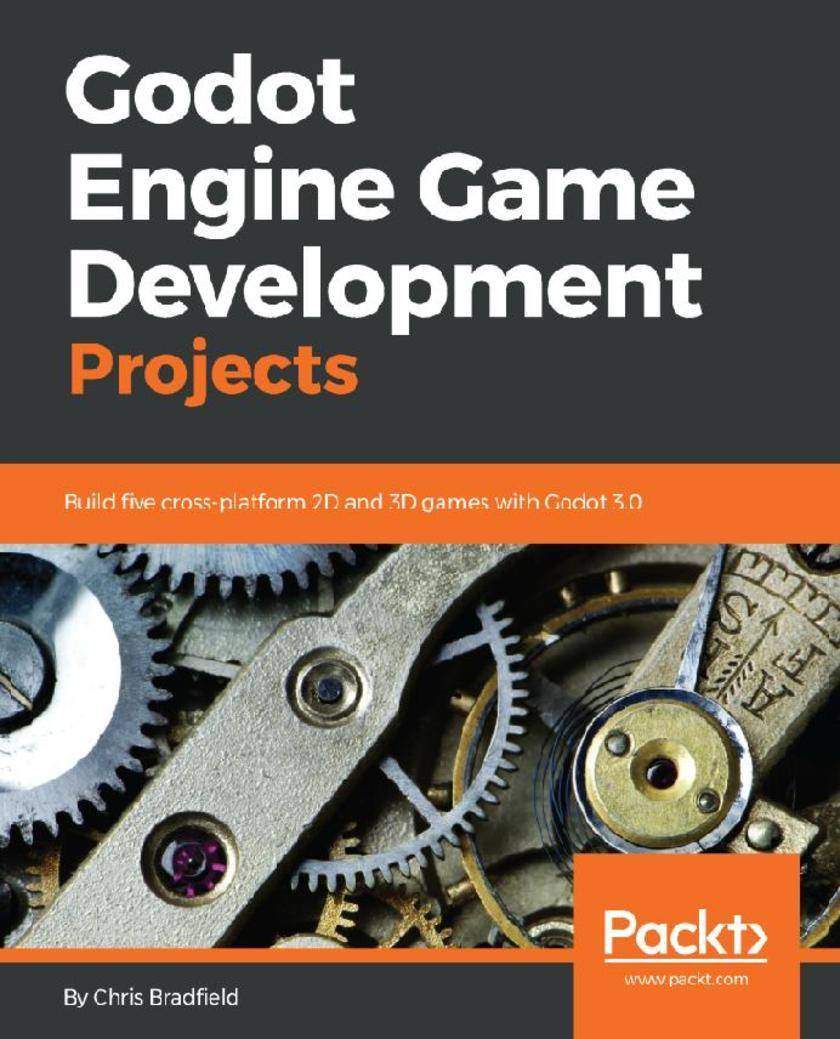
Godot Engine Game Development Projects
¥73.02
Create interactive cross-platform games with the Godot Engine 3.0 About This Book ? Learn the art of developing cross-platform games ? Leverage Godot’s node and scene system to design robust, reusable game objects ? Integrate Blender easily and efficiently with Godot to create powerful 3D games Who This Book Is For Godot Engine Game Development Projects is for both new users and experienced developers, who want to learn to make games using a modern game engine. Some prior programming experience is recommended. What You Will Learn ? Get started with the Godot game engine and editor ? Organize a game project ? Import graphical and audio assets ? Use Godot’s node and scene system to design robust, reusable game objects ? Write code in GDScript to capture input and build complex behaviors ? Implement user interfaces to display information ? Create visual effects to spice up your game ? Learn techniques that you can apply to your own game projects In Detail Godot Engine Game Development Projects is an introduction to the Godot game engine and its new 3.0 version. Godot 3.0 brings a large number of new features and capabilities that make it a strong alternative to expensive commercial game engines. For beginners, Godot offers a friendly way to learn game development techniques, while for experienced developers it is a powerful, customizable tool that can bring your visions to life. This book consists of five projects that will help developers achieve a sound understanding of the engine when it comes to building games. Game development is complex and involves a wide spectrum of knowledge and skills. This book can help you build on your foundation level skills by showing you how to create a number of small-scale game projects. Along the way, you will learn how Godot works and discover important game development techniques that you can apply to your projects. Using a straightforward, step-by-step approach and practical examples, the book will take you from the absolute basics through to sophisticated game physics, animations, and other techniques. Upon completing the final project, you will have a strong foundation for future success with Godot 3.0. Style and approach The book is divided into five parts; each covering a different small-game project using a straightforward, step-by-step approach and practical examples. The book will take readers from the absolute basics through sophisticated game physics, animation, and other techniques.
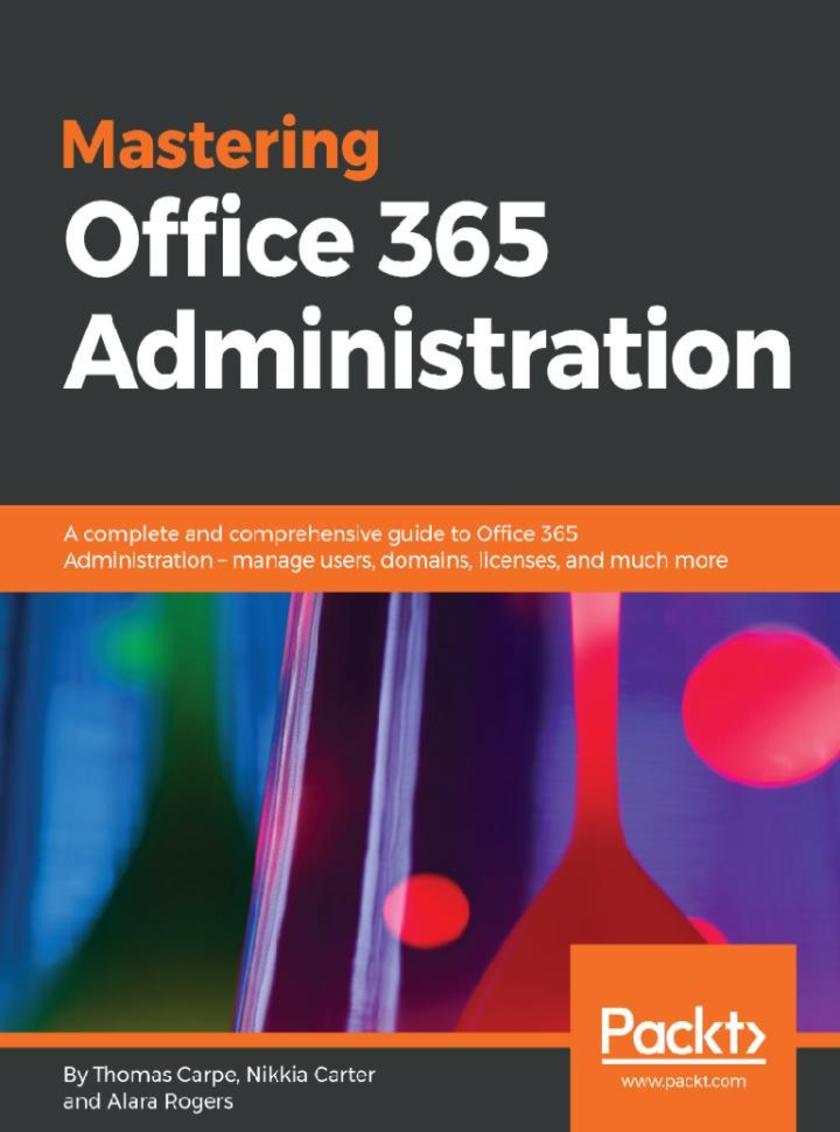
Mastering Office 365 Administration
¥73.02
Leverage Office 365 to increase your organization's efficiency About This Book ? Perform common to advanced-level management and administrative tasks for your organization with Office 365 ? Become an Office 365 generalist who can work with the entire stack—not just specific products ? An advanced-level guide that will teach you to implement enterprise-level services into your organization, no matter the size of the business Who This Book Is For This book targets architects, sys admins, engineers, and administrators who are working with Office 365 and are responsible for configuring, implementing, and managing Office 365 in their organization. A prior knowledge of Office 365 and Exchange servers is mandatory. What You Will Learn ? Get an understanding of the vast Office 365 feature set ? Learn how workloads and applications interact and integrate with each other ? Connect PowerShell to various Office 365 services and perform tasks ? Learn to manage Skype for Business Online ? Get support and monitor Office 365 service health ? Manage and administer identities and groups efficiently In Detail In today's world, every organization aims to migrate to the cloud to become more efficient by making full use of the latest technologies. Office 365 is your one-stop solution to making your organization reliable, scalable, and fast. The book will start with an overview of Office 365 components, and help you learn how to use the administration portal, and perform basic administration. Then this book covers common management tasks such as managing users, admin roles, groups, securing Office 365, and enforcing compliance. In the next set of chapters, you will learn topics such as managing Skype for Business Online, Yammer, OneDrive for Business, and Microsoft Teams. In the final section of the book, you will learn how to perform reporting and monitor Office 365 service health. By the end of this book, you will be able to implement enterprise-level services with Office 365 based on your organization's needs. Style and approach A practical guide that offers a simple way to easily understand and access common administration tasks, without getting lost in the plethora of online resources, support pages, blog posts, and videos.

Mastering Wireshark 2
¥73.02
Use Wireshark 2 to overcome real-world network problems About This Book ? Delve into the core functionalities of the latest version of Wireshark ? Master network security skills with Wireshark 2 ? Efficiently find the root cause of network-related issues Who This Book Is For If you are a security professional or a network enthusiast and are interested in understanding the internal working of networks, and if you have some prior knowledge of using Wireshark, then this book is for you. What You Will Learn ? Understand what network and protocol analysis is and how it can help you ? Use Wireshark to capture packets in your network ? Filter captured traffic to only show what you need ? Explore useful statistic displays to make it easier to diagnose issues ? Customize Wireshark to your own specifications ? Analyze common network and network application protocols In Detail Wireshark, a combination of a Linux distro (Kali) and an open source security framework (Metasploit), is a popular and powerful tool. Wireshark is mainly used to analyze the bits and bytes that flow through a network. It efficiently deals with the second to the seventh layer of network protocols, and the analysis made is presented in a form that can be easily read by people. Mastering Wireshark 2 helps you gain expertise in securing your network. We start with installing and setting up Wireshark2.0, and then explore its interface in order to understand all of its functionalities. As you progress through the chapters, you will discover different ways to create, use, capture, and display filters. By halfway through the book, you will have mastered Wireshark features, analyzed different layers of the network protocol, and searched for anomalies. You’ll learn about plugins and APIs in depth. Finally, the book focuses on pocket analysis for security tasks, command-line utilities, and tools that manage trace files. By the end of the book, you'll have learned how to use Wireshark for network security analysis and configured it for troubleshooting purposes. Style and approach This step-by-step guide on Wireshark 2 starts with capturing and filtering traffic and follows with analysis and statistics, as well as all the new features of Wireshark 2.

Building RESTful Web Services with .NET Core
¥73.02
Building Complete E-commerce/Shopping Cart Application About This Book ? Follow best practices and explore techniques such as clustering and caching to achieve a reactive, scalable web service ? Leverage the .NET Framework to quickly implement RESTful endpoints. ? Learn to implement a client library for a RESTful web service using ASP.NET Core. Who This Book Is For This book is intended for those who want to learn to build RESTful web services with the latest .NET Core Framework. To make best use of the code samples included in the book, you should have a basic knowledge of C# and .NET Core. What You Will Learn ? Add basic authentication to your RESTful API ? Create a Carts Controller and Orders Controller to manage and process Orders ? Intercept HTTP requests and responses by building your own middleware ? Test service calls using Postman and Advanced REST Client ? Secure your data/application using annotations In Detail REST is an architectural style that tackles the challenges of building scalable web services. In today's connected world, APIs have taken a central role on the web. APIs provide the fabric through which systems interact, and REST has become synonymous with APIs. The depth, breadth, and ease of use of ASP.NET Core makes it a breeze for developers to work with for building robust web APIs. This book takes you through the design of RESTful web services and leverages the ASP.NET Core framework to implement these services. This book begins by introducing you to the basics of the philosophy behind REST. You'll go through the steps of designing and implementing an enterprise-grade RESTful web service. This book takes a practical approach, that you can apply to your own circumstances. This book brings forth the power of the latest .NET Core release, working with MVC. Later, you will learn about the use of the framework to explore approaches to tackle resilience, security, and scalability concerns. You will explore the steps to improve the performance of your applications. You'll also learn techniques to deal with security in web APIs and discover how to implement unit and integration test strategies. By the end of the book, you will have a complete understanding of Building a client for RESTful web services, along with some scaling techniques. Style and approach This book is a step-by-step, hands-on guide to designing and building RESTful web services.
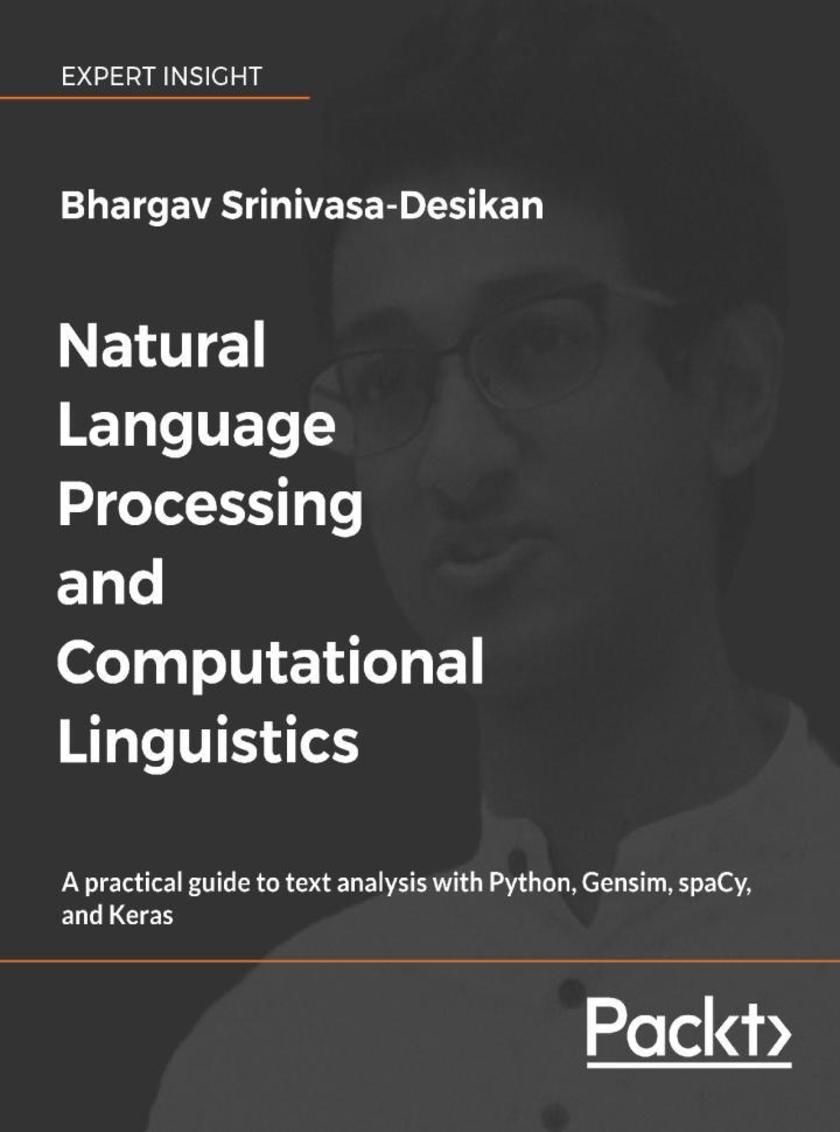
Natural Language Processing and Computational Linguistics
¥73.02
Work with Python and powerful open source tools such as Gensim and spaCy to perform modern text analysis, natural language processing, and computational linguistics algorithms. About This Book ? Discover the open source Python text analysis ecosystem, using spaCy, Gensim, scikit-learn, and Keras ? Hands-on text analysis with Python, featuring natural language processing and computational linguistics algorithms ? Learn deep learning techniques for text analysis Who This Book Is For This book is for you if you want to dive in, hands-first, into the interesting world of text analysis and NLP, and you're ready to work with the rich Python ecosystem of tools and datasets waiting for you! What You Will Learn ? Why text analysis is important in our modern age ? Understand NLP terminology and get to know the Python tools and datasets ? Learn how to pre-process and clean textual data ? Convert textual data into vector space representations ? Using spaCy to process text ? Train your own NLP models for computational linguistics ? Use statistical learning and Topic Modeling algorithms for text, using Gensim and scikit-learn ? Employ deep learning techniques for text analysis using Keras In Detail Modern text analysis is now very accessible using Python and open source tools, so discover how you can now perform modern text analysis in this era of textual data. This book shows you how to use natural language processing, and computational linguistics algorithms, to make inferences and gain insights about data you have. These algorithms are based on statistical machine learning and artificial intelligence techniques. The tools to work with these algorithms are available to you right now - with Python, and tools like Gensim and spaCy. You'll start by learning about data cleaning, and then how to perform computational linguistics from first concepts. You're then ready to explore the more sophisticated areas of statistical NLP and deep learning using Python, with realistic language and text samples. You'll learn to tag, parse, and model text using the best tools. You'll gain hands-on knowledge of the best frameworks to use, and you'll know when to choose a tool like Gensim for topic models, and when to work with Keras for deep learning. This book balances theory and practical hands-on examples, so you can learn about and conduct your own natural language processing projects and computational linguistics. You'll discover the rich ecosystem of Python tools you have available to conduct NLP - and enter the interesting world of modern text analysis. Style and approach The book teaches NLP from the angle of a practitioner as well as that of a student. This is a tad unusual, but given the enormous speed at which new algorithms and approaches travel from scientific beginnings to industrial implementation, first principles can be clarified with the help of entirely practical examples.
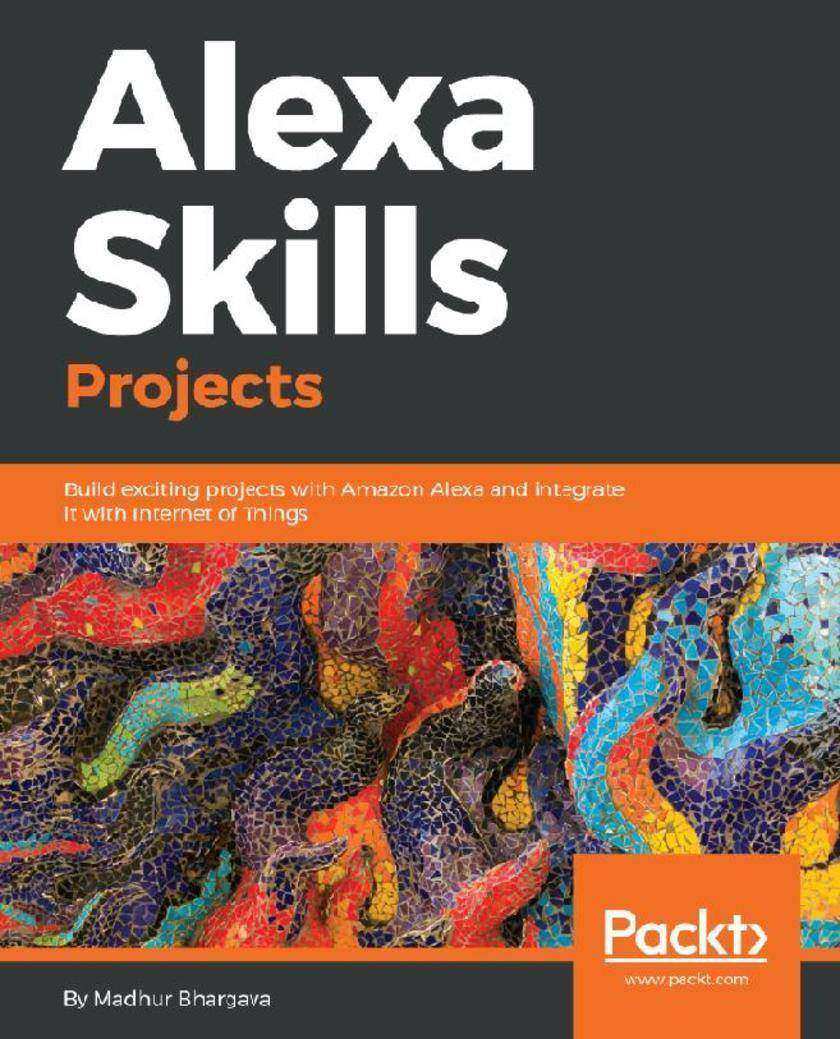
Alexa Skills Projects
¥73.02
Get up and running with the fundamentals of Amazon Alexa and build exciting IoT projects About This Book ? Gain hands-on experience of working with Amazon Echo and Alexa ? Build exciting IoT projects using Amazon Echo ? Learn about voice-enabled smart devices Who This Book Is For Alexa Skills Projects is for individuals who want to have a deep understanding of the underlying technology that drives Amazon Echo and Alexa, and how it can be integrated with the Internet of Things to develop hands-on projects. What You Will Learn ? Understand how Amazon Echo is already being used in various domains ? Discover how an Alexa Skill is architected ? Get a clear understanding of how some of the most popular Alexa Skills work ? Design Alexa Skills for specific purposes and interact with Amazon Echo to execute them ? Gain experience of programming for Amazon Echo ? Explore future applications of Amazon Echo and other voice-activated devices In Detail Amazon Echo is a smart speaker developed by Amazon, which connects to Amazon’s Alexa Voice Service and is entirely controlled by voice commands. Amazon Echo is currently being used for a variety of purposes such as home automation, asking generic queries, and even ordering a cab or pizza. Alexa Skills Projects starts with a basic introduction to Amazon Alexa and Echo. You will then deep dive into Alexa Programming concepts such as Intents, Slots, Lambdas and maintaining your skill’s state using DynamoDB. You will get a clear understanding of how some of the most popular Alexa Skills work, and gain experience of working with real-world Amazon Echo applications. In the concluding chapters, you will explore the future of voice-enabled applications and their coverage with respect to the Internet of Things. By the end of the book, you will have learned to design Alexa Skills for specific purposes and interact with Amazon Echo to execute these skills. Style and approach A practical guide filled with real world examples that will help you understand the process of creating Alexa Skills from scratch and it's real world applications.
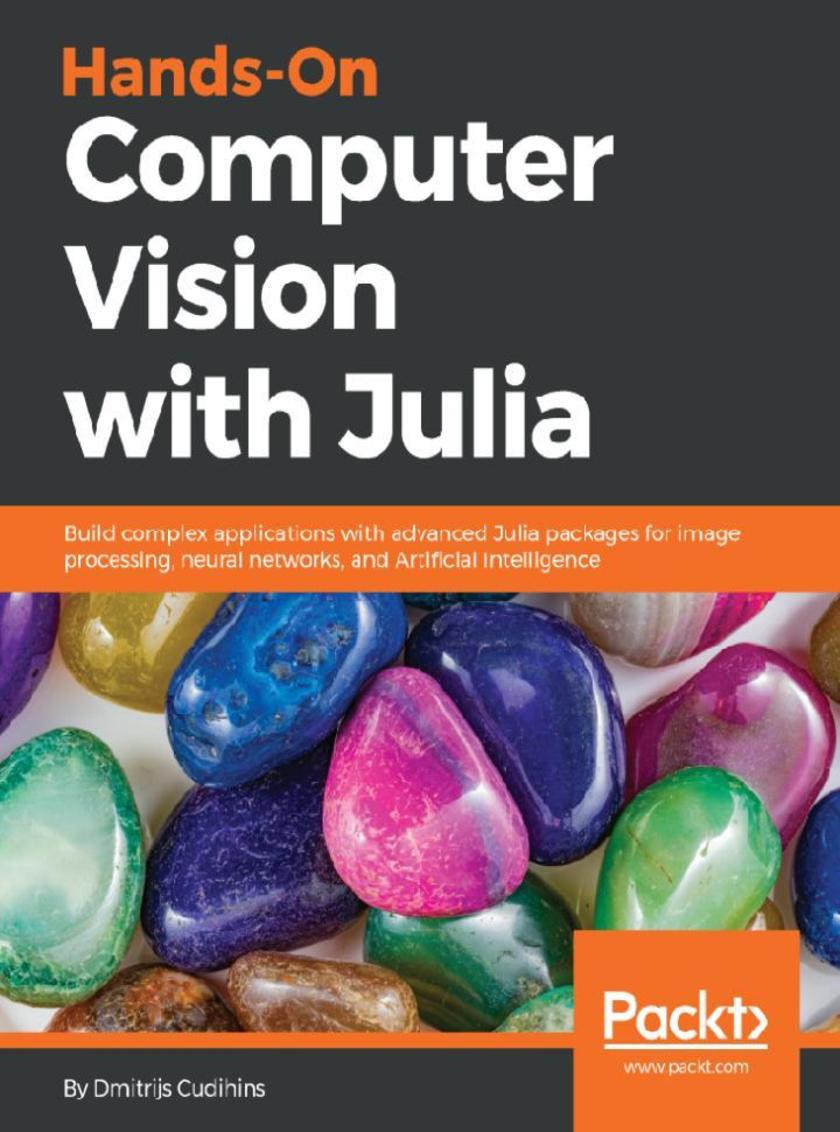
Hands-On Computer Vision with Julia
¥73.02
Explore the various packages in Julia that support image processing and build neural networks for video processing and object tracking. About This Book ? Build a full-fledged image processing application using JuliaImages ? Perform basic to advanced image and video stream processing with Julia's APIs ? Understand and optimize various features of OpenCV with easy examples Who This Book Is For Hands-On Computer Vision with Julia is for Julia developers who are interested in learning how to perform image processing and want to explore the field of computer vision. Basic knowledge of Julia will help you understand the concepts more effectively. What You Will Learn ? Analyze image metadata and identify critical data using JuliaImages ? Apply filters and improve image quality and color schemes ? Extract 2D features for image comparison using JuliaFeatures ? Cluster and classify images with KNN/SVM machine learning algorithms ? Recognize text in an image using the Tesseract library ? Use OpenCV to recognize specific objects or faces in images and videos ? Build neural network and classify images with MXNet In Detail Hands-On Computer Vision with Julia is a thorough guide for developers who want to get started with building computer vision applications using Julia. Julia is well suited to image processing because it’s easy to use and lets you write easy-to-compile and efficient machine code. This book begins by introducing you to Julia's image processing libraries such as Images.jl and ImageCore.jl. You’ll get to grips with analyzing and transforming images using JuliaImages; some of the techniques discussed include enhancing and adjusting images. As you make your way through the chapters, you’ll learn how to classify images, cluster them, and apply neural networks to solve computer vision problems. In the concluding chapters, you will explore OpenCV applications to perform real-time computer vision analysis, for example, face detection and object tracking. You will also understand Julia's interaction with Tesseract to perform optical character recognition and build an application that brings together all the techniques we introduced previously to consolidate the concepts learned. By end of the book, you will have understood how to utilize various Julia packages and a few open source libraries such as Tesseract and OpenCV to solve computer vision problems with ease. Style and approach Readers will be taken through various packages that support image processing in Julia, and will also tap into open-source libraries such as Open CV and Tesseract to find the optimum solution to problems encountered in computer vision.
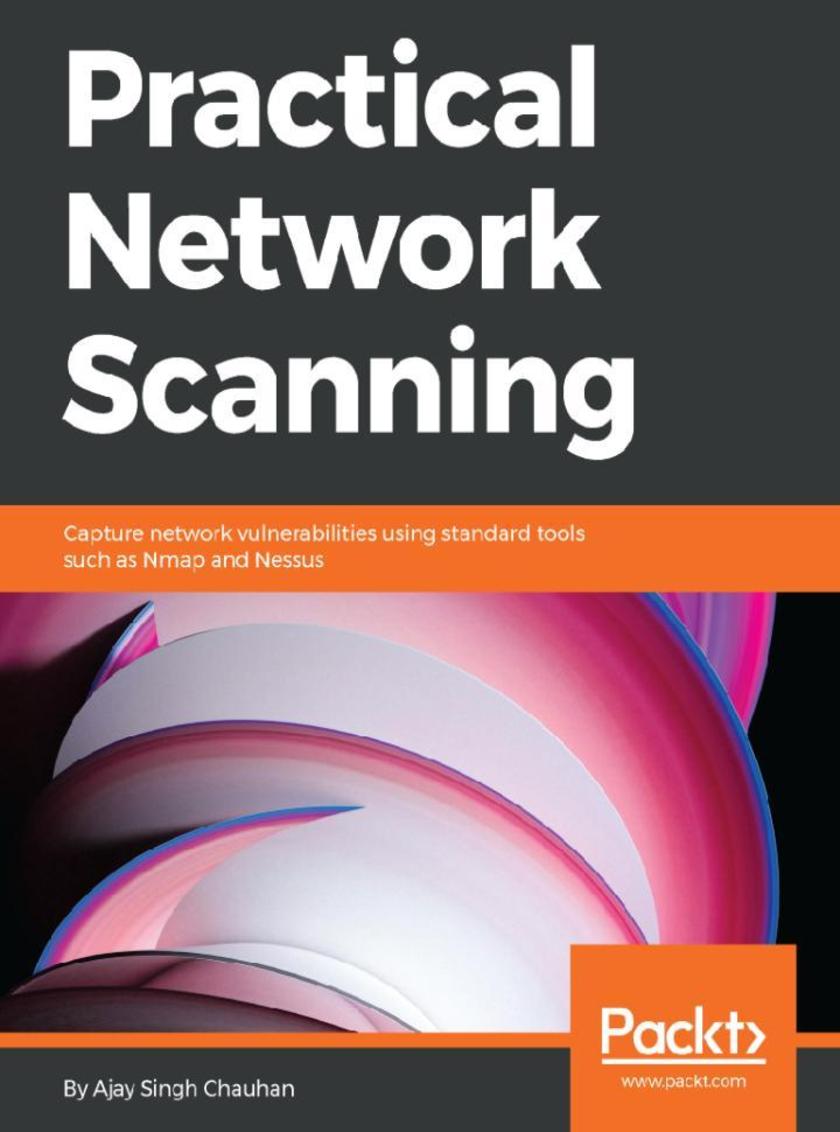
Practical Network Scanning
¥73.02
Get more from your network by securing its infrastructure and increasing its effectiveness About This Book ? Learn to choose the best network scanning toolset for your system ? Implement different concepts of network scanning such as port scanning and OS detection ? Adapt a practical approach to securing your network Who This Book Is For If you are a security professional who is responsible for securing an organization's infrastructure, then this book is for you. What You Will Learn ? Achieve an effective security posture to design security architectures ? Learn vital security aspects before moving to the Cloud ? Launch secure applications with Web Application Security and SQL Injection ? Explore the basics of threat detection/response/ mitigation with important use cases ? Learn all about integration principles for PKI and tips to secure it ? Design a WAN infrastructure and ensure security over a public WAN In Detail Network scanning is the process of assessing a network to identify an active host network; same methods can be used by an attacker or network administrator for security assessment. This procedure plays a vital role in risk assessment programs or while preparing a security plan for your organization. Practical Network Scanning starts with the concept of network scanning and how organizations can benefit from it. Then, going forward, we delve into the different scanning steps, such as service detection, firewall detection, TCP/IP port detection, and OS detection. We also implement these concepts using a few of the most prominent tools on the market, such as Nessus and Nmap. In the concluding chapters, we prepare a complete vulnerability assessment plan for your organization. By the end of this book, you will have hands-on experience in performing network scanning using different tools and in choosing the best tools for your system. Style and approach A practical guide that offers a simple way to easily understand network security concepts and apply them to strengthen your network.
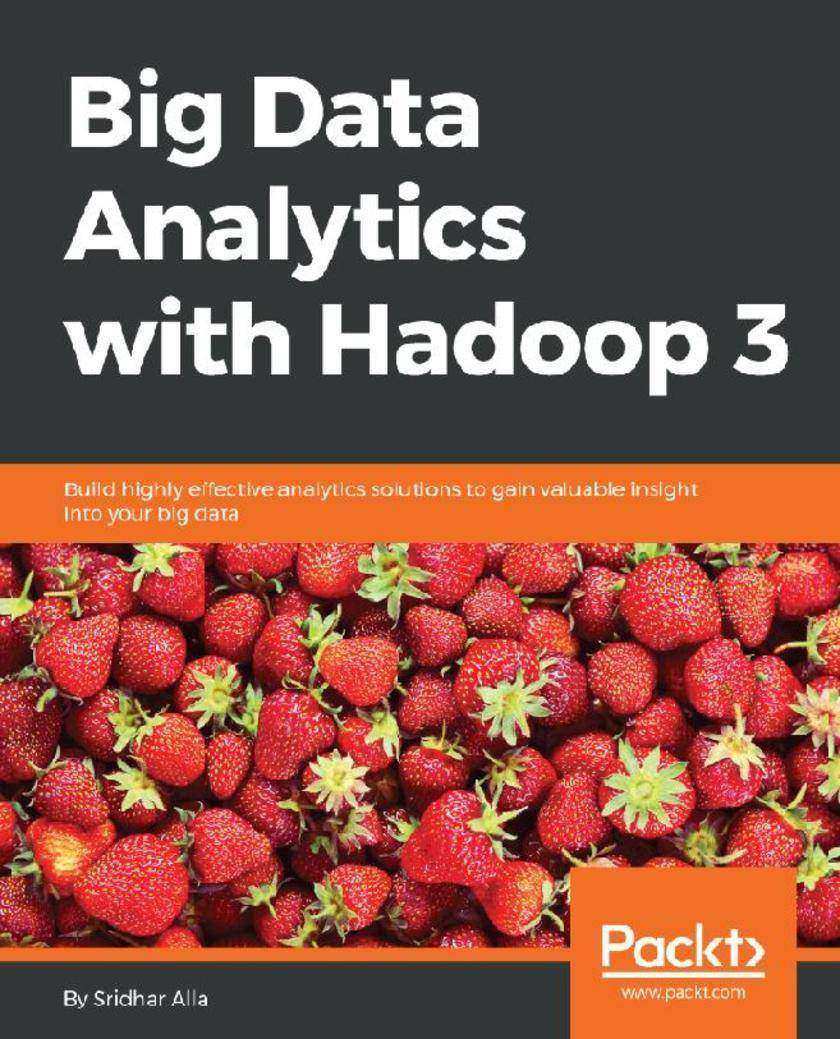
Big Data Analytics with Hadoop 3
¥73.02
Explore big data concepts, platforms, analytics, and their applications using the power of Hadoop 3 About This Book ? Learn Hadoop 3 to build effective big data analytics solutions on-premise and on cloud ? Integrate Hadoop with other big data tools such as R, Python, Apache Spark, and Apache Flink ? Exploit big data using Hadoop 3 with real-world examples Who This Book Is For Big Data Analytics with Hadoop 3 is for you if you are looking to build high-performance analytics solutions for your enterprise or business using Hadoop 3’s powerful features, or you’re new to big data analytics. A basic understanding of the Java programming language is required. What You Will Learn ? Explore the new features of Hadoop 3 along with HDFS, YARN, and MapReduce ? Get well-versed with the analytical capabilities of Hadoop ecosystem using practical examples ? Integrate Hadoop with R and Python for more efficient big data processing ? Learn to use Hadoop with Apache Spark and Apache Flink for real-time data analytics ? Set up a Hadoop cluster on AWS cloud ? Perform big data analytics on AWS using Elastic Map Reduce In Detail Apache Hadoop is the most popular platform for big data processing, and can be combined with a host of other big data tools to build powerful analytics solutions. Big Data Analytics with Hadoop 3 shows you how to do just that, by providing insights into the software as well as its benefits with the help of practical examples. Once you have taken a tour of Hadoop 3’s latest features, you will get an overview of HDFS, MapReduce, and YARN, and how they enable faster, more efficient big data processing. You will then move on to learning how to integrate Hadoop with the open source tools, such as Python and R, to analyze and visualize data and perform statistical computing on big data. As you get acquainted with all this, you will explore how to use Hadoop 3 with Apache Spark and Apache Flink for real-time data analytics and stream processing. In addition to this, you will understand how to use Hadoop to build analytics solutions on the cloud and an end-to-end pipeline to perform big data analysis using practical use cases. By the end of this book, you will be well-versed with the analytical capabilities of the Hadoop ecosystem. You will be able to build powerful solutions to perform big data analytics and get insight effortlessly. Style and approach Filled with practical examples and use cases, this book will not only help you get up and running with Hadoop, but will also take you farther down the road to deal with Big Data Analytics
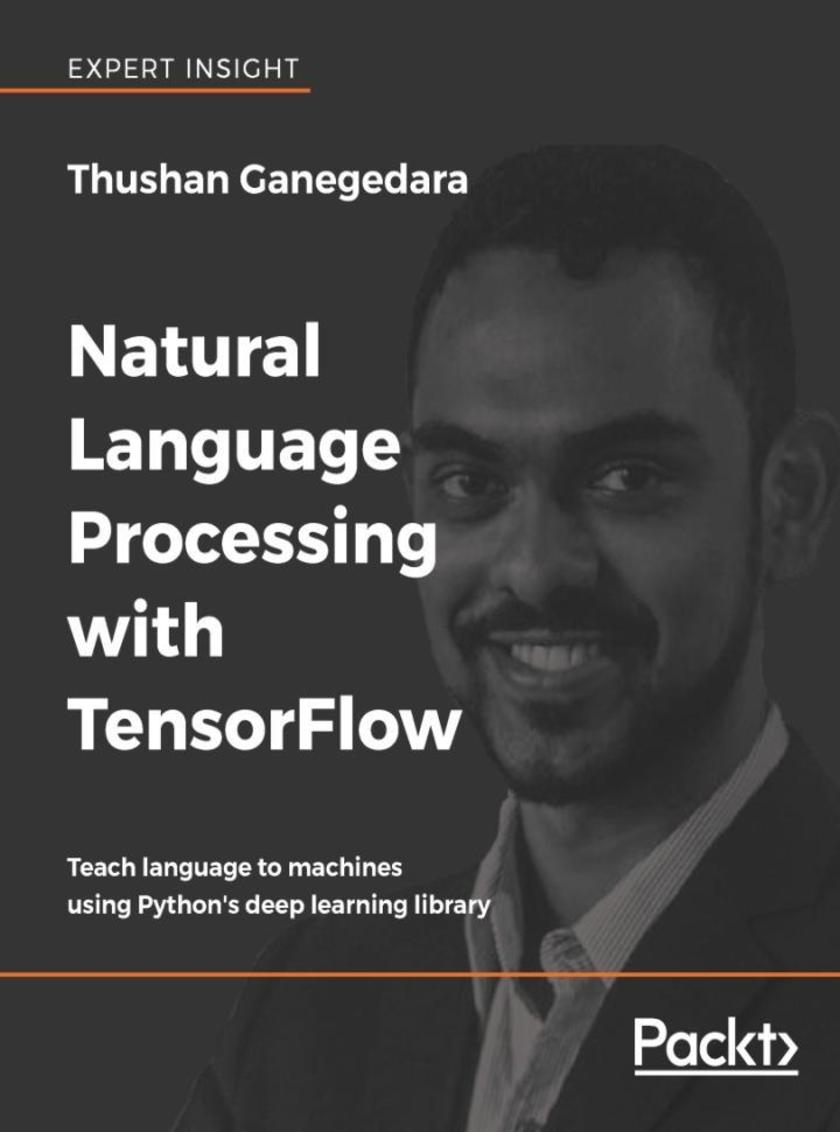
Natural Language Processing with TensorFlow
¥73.02
Write modern natural language processing applications using deep learning algorithms and TensorFlow About This Book ? Focuses on more efficient natural language processing using TensorFlow ? Covers NLP as a field in its own right to improve understanding for choosing TensorFlow tools and other deep learning approaches ? Provides choices for how to process and evaluate large unstructured text datasets ? Learn to apply the TensorFlow toolbox to specific tasks in the most interesting field in artificial intelligence Who This Book Is For This book is for Python developers with a strong interest in deep learning, who want to learn how to leverage TensorFlow to simplify NLP tasks. Fundamental Python skills are assumed, as well as some knowledge of machine learning and undergraduate-level calculus and linear algebra. No previous natural language processing experience required, although some background in NLP or computational linguistics will be helpful. What You Will Learn ? Core concepts of NLP and various approaches to natural language processing ? How to solve NLP tasks by applying TensorFlow functions to create neural networks ? Strategies to process large amounts of data into word representations that can be used by deep learning applications ? Techniques for performing sentence classification and language generation using CNNs and RNNs ? About employing state-of-the art advanced RNNs, like long short-term memory, to solve complex text generation tasks ? How to write automatic translation programs and implement an actual neural machine translator from scratch ? The trends and innovations that are paving the future in NLP In Detail Natural language processing (NLP) supplies the majority of data available to deep learning applications, while TensorFlow is the most important deep learning framework currently available. Natural Language Processing with TensorFlow brings TensorFlow and NLP together to give you invaluable tools to work with the immense volume of unstructured data in today’s data streams, and apply these tools to specific NLP tasks. Thushan Ganegedara starts by giving you a grounding in NLP and TensorFlow basics. You'll then learn how to use Word2vec, including advanced extensions, to create word embeddings that turn sequences of words into vectors accessible to deep learning algorithms. Chapters on classical deep learning algorithms, like convolutional neural networks (CNN) and recurrent neural networks (RNN), demonstrate important NLP tasks as sentence classification and language generation. You will learn how to apply high-performance RNN models, like long short-term memory (LSTM) cells, to NLP tasks. You will also explore neural machine translation and implement a neural machine translator. After reading this book, you will gain an understanding of NLP and you'll have the skills to apply TensorFlow in deep learning NLP applications, and how to perform specific NLP tasks. Style and approach The book provides an emphasis on both the theory and practice of natural language processing. It introduces the reader to existing TensorFlow functions and explains how to apply them while writing NLP algorithms. The popular Word2vec method is used to teach the essential process of learning word representations. The book focuses on how to apply classical deep learning to NLP, as well as exploring cutting edge and emerging approaches. Specific examples are used to make the concepts and techniques concrete.

DevOps: Continuous Delivery, Integration, and Deployment with DevOps
¥73.02
Explore the high-in demand core DevOps strategies with powerful DevOps tools such as Ansible, Jenkins, and Chef About This Book ? Get acquainted with methodologies and tools of the DevOps framework ? Perform continuous integration, delivery, deployment, and monitoring using DevOps tools ? Explore popular tools such as Git, Jenkins, Maven, Gerrit, Nexus, Selenium, and so on ? Embedded with assessments that will help you revise the concepts you have learned in this book Who This Book Is For This book is for engineers, architects, and developers, who wish to learn the core strategies of DevOps. What You Will Learn ? Get familiar with life cycle models, maturity states, progression and best practices of DevOps frameworks ? Learn to set up Jenkins and integrate it with Git ? Know how to build jobs and perform testing with Jenkins ? Implement infrastructure automation (Infrastructure as Code) with tools such as Chef and Ansible ? Understand continuous monitoring process with tools such as Splunk and Nagios ? Learn how Splunk improves the code quality In Detail DevOps is the most widely used software engineering culture and practice that aim sat software development and operation. Continuous integration is a cornerstone technique of DevOps that merges software code updates from developers into a shared central mainline. This book takes a practical approach and covers the tools and strategies of DevOps. It starts with familiarizing you with DevOps framework and then shows how toper form continuous delivery, integration, and deployment with DevOps. You will explore DevOps process maturity frameworks and progression models with checklist templates for each phase of DevOps. You will also be familiar with agile terminology, methodology, and the benefits accrued by an organization by adopting it. You will also get acquainted with popular tools such as Git, Jenkins ,Maven, Gerrit, Nexus, Selenium, and so on.You will learn configuration, automation, and the implementation of infrastructure automation (Infrastructure as Code) with tools such as Chef and Ansible. This book is ideal for engineers, architects, and developers, who wish to learn the core strategies of DevOps. Style and approach This book takes a practical approach and covers the tools and strategies of DevOps. It starts with familiarizing you with DevOps framework and then shows how to perform continuous delivery, integration, and deployment with DevOps. Note: This book is a blend of text and quizzes, all packaged up keeping your journey in mind. It includes content from the following Packt product: ? Hands-on DevOps by Sricharan Vadapalli
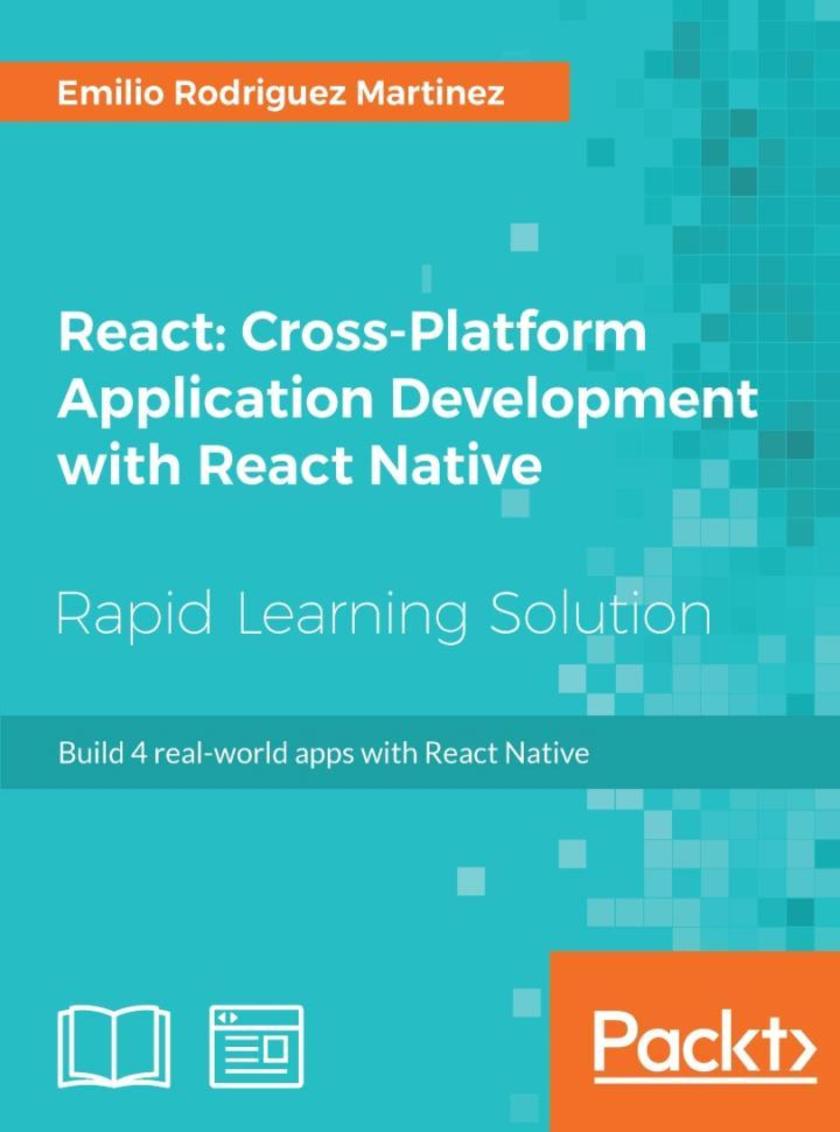
React: Cross-Platform Application Development with React Native
¥73.02
Harness the power of React Native to build 4 real-world apps About This Book ? Build quirky and fun projects from scratch and become efficient with React Native ? Learn to build professional Android and iOS applications using your existing JavaScript knowledge ? Use isomorphic principles to build mobile apps that offer a native user experience ? Embedded with assessments that will help you revise the concepts you have learned in this course Who This Book Is For This book is for developers who want to build amazing cross-platform apps with React Native. What You Will Learn ? Structure React Native projects to ease maintenance and extensibility ? Optimize a project to speed up development ? Use external modules to speed up the development and maintenance of your projects ? Explore the different UI and code patterns to be used for iOS and Android ? Get to know the best practices when building apps in React Native In Detail React Native helps web and mobile developers to build cross-platform apps that perform at the same level as any other natively developed app. The range of apps that can be built using this library is huge. From e-commerce to games, React Native is a good fit for any mobile project due to its flexibility and extendable nature. This project-based book consists of four standalone projects. Each project will help you gain a sound understanding of the framework and build mobile apps with native user experience. Starting with a simple standalone car booking app, you will progressively move on to building advanced apps by adding connectivity with external APIs, using native features, such as the camera or microphone, in the mobile device, integrating with state management libraries such as Redux or MobX, or leveraging React Native’s performance by building a full-featured game. This book is ideal for developers who want to build amazing cross-platform apps with React Native. This book is embedded with useful assessments that will help you revise the concepts you have learned in this book. Style and approach This project-based book consists of four projects. Each project is a standalone project that covers the core techniques and concepts of React Native. Note: This book is a blend of text and quizzes, all packaged up keeping your journey in mind. It includes content from the following Packt products: ? React Native Blueprints by Emilio Rodriguez Martinez
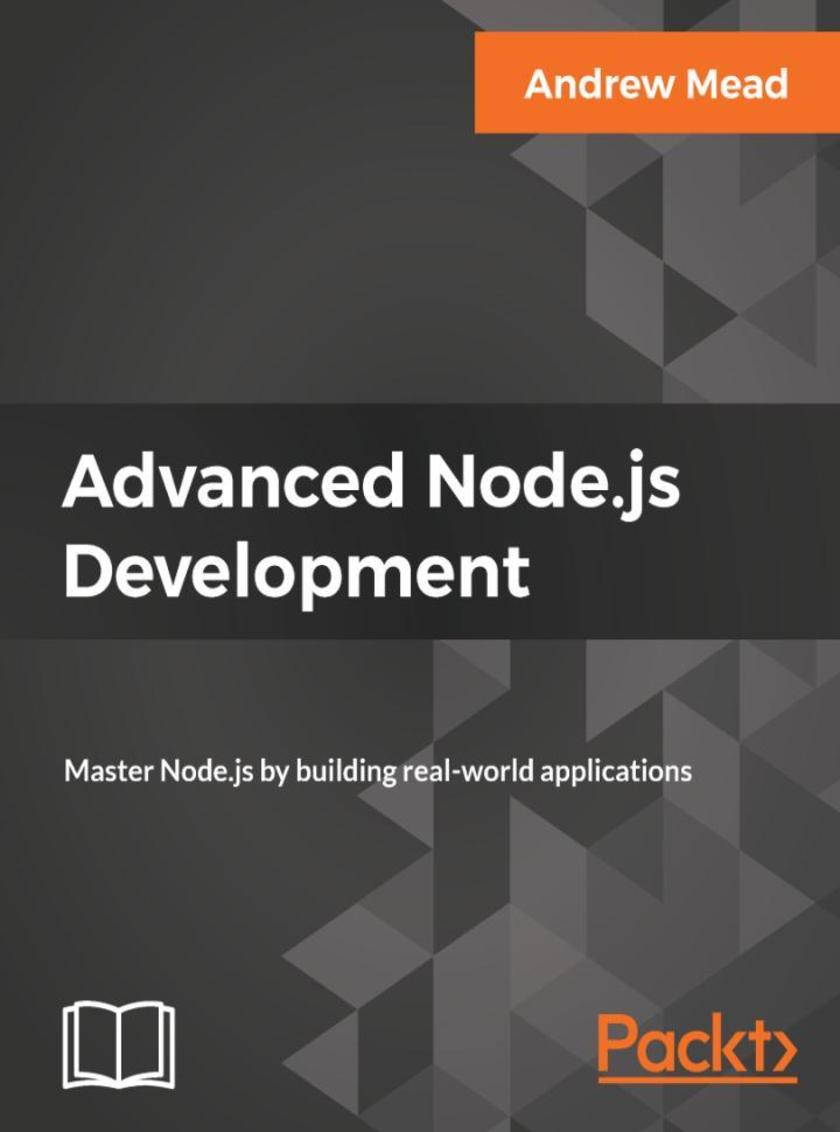
Advanced Node.js Development
¥73.02
Takes you through creating your own API, building a full real-time web app, securing your Node systems, and practical applications of the latest Async and Await technologies. It maps out everything in a comprehensive, easy-to-follow package designed to get you up and running quickly. About This Book ? Entirely project-based and practical ? Explains the "why" of Node.js features, not just the "how", providing with a deep understanding and enabling you to easily apply concepts in your own applications ? Covers the full range of technologies around Node.js – npm, MongoDB, version control with Git, and many more Who This Book Is For This book is for anyone looking to launch their own Node applications, switch careers, or freelance as a Node developer. You should have a basic understanding of JavaScript in order to follow this book. This book follows directly on from Learning Node.js Development, but more advanced readers can benefit from this book without having read the first part. What You Will Learn ? Develop, test, and deploy real-world Node.js applications ? Master Node.js by building practical, working examples ? Use awesome third-party Node modules such as MongoDB, Mongoose, Socket.io, and Express ? Create real-time web applications ? Explore async and await in ES7 In Detail Advanced Node.js Development is a practical, project-based book that provides you with all you need to progress as a Node.js developer. Node is a ubiquitous technology on the modern web, and an essential part of any web developer’s toolkit. If you're looking to create real-world Node applications, or you want to switch careers or launch a side-project to generate some extra income, then you're in the right place. This book was written around a single goal: turning you into a professional Node developer capable of developing, testing, and deploying real-world production applications. There's no better time to dive in. According to the 2018 Stack Overflow Survey, Node is in the top ten for back-end popularity and back-end salary. This book is built from the ground up around the latest version of Node.js (version 9.x.x). You'll be learning all the cutting-edge features available only in the latest software versions. This book delivers advanced skills that you need to become a professional Node developer. Along this journey you'll create your own API, you'll build a full real-time web app and create projects that apply the latest Async and Await technologies. Andrew Mead maps everything out for you in this book so that you can learn how to build powerful Node.js projects in a comprehensive, easy-to-follow package designed to get you up and running quickly. Style and approach This book is entirely project-based. From the very beginning, you'll be programming every single app and completing various challenges designed to help test and reinforce what you've learned. There's no copying-and-pasting here. This book is about writing code and building projects.
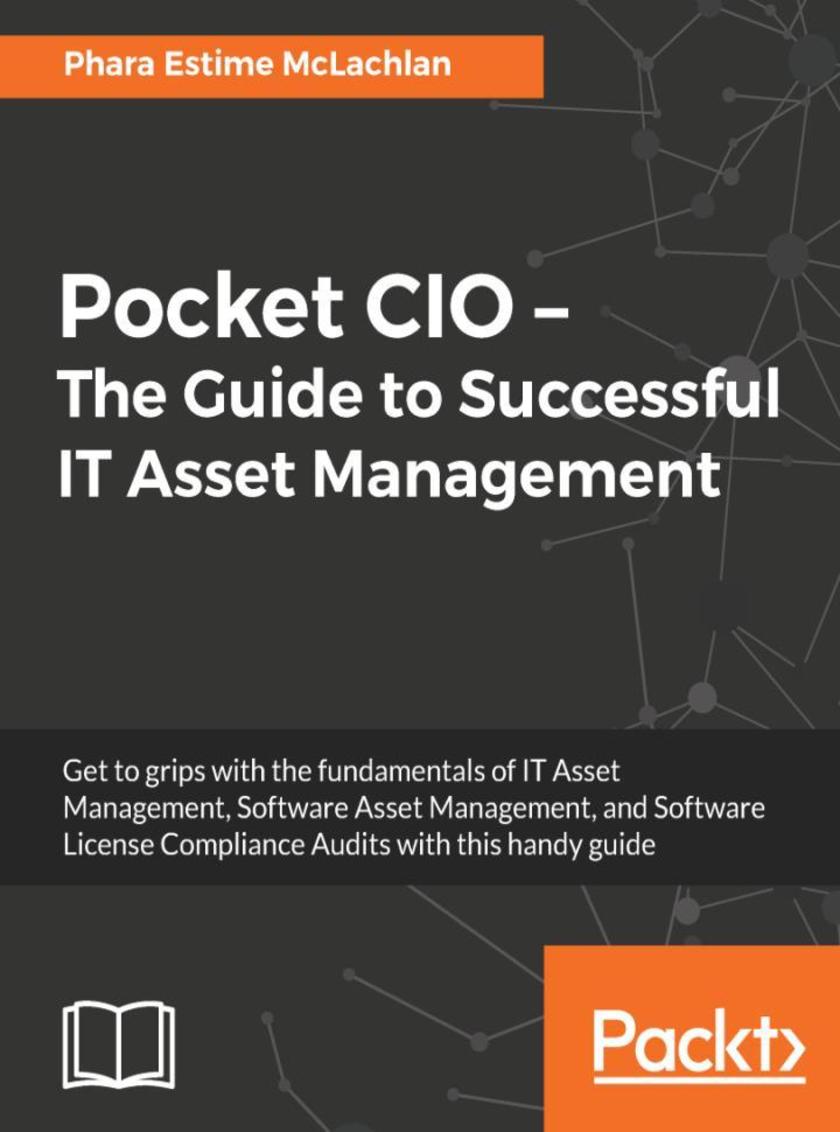
Pocket CIO – The Guide to Successful IT Asset Management
¥73.02
Create and manage a clear working IT asset management strategy with this unique guide About This Book ? A detailed IT Asset Management (ITAM) guidebook with real-world templates that can be converted into working ITAM documents. ? Includes in-depth discussion on how risk management has changed and the possible solutions needed to address the new normal ? A step-by-step ITAM manual for newbies as well as seasoned ITAM veterans Who This Book Is For This book is intended for CIOs, VPs and CTOs of mid to large-sized enterprises and organizations. If you are dealing with changes such as mergers, acquisitions, divestitures, new products or services, cyber security, mandated regulations, expansion, and much more, this book will help you too. What You Will Learn ? Close the hidden risk gaps created by IT assets (hardware and software) ? Create and manage a clear working proactive ITAM and SAM program and policy ? A clear, concise explanation of what IT Asset Management is, the benefits, and results ? A clear, concise explanation of what Software Asset Management is, the benefits, and results ? The best ways to manage a software audit and how to be prepared for one ? Considerations for selecting the best technology for a specific company including what questions should be asked at the onset. ? Increasing ITAM program and project success with change management In Detail IT Asset Management (ITAM) supports life cycle management and strategic decision making for an IT environment. This book is a detailed IT Asset Management (ITAM) guidebook with real-world templates that can be converted into working ITAM documents. It is a step-by-step IT asset management manual for the newbies as well as the seasoned ITAM veterans, providing a unique insight into asset management. It discusses how risk management has changed over time and the possible solutions needed to address the new normal. The book also includes considerations for selecting the best technology for a specific company including what questions should be asked at the onset, as well as the best ways to manage a software audit and how to be prepared for one. This book is your perfect guide to create holistic IT asset management and Software asset management programs that close the risk gaps, increases productivity and results in cost efficiencies. It allows the IT Asset Managers, Software Asset Managers, and/or the full IT Asset Management (ITAM) ITAM/SAM program team to take a deep dive by using the templates offered in the guidebook. You will be aware of the specific roles and responsibilities for every aspect of IT asset management, software asset management, and software license compliance audit response. By the end of this book, you will be well aware of what IT and Software Asset Management is all about and the different steps, processes, and roles required to truly master it. By the end of this book, you will be well aware of what IT Asset Management is all about and the different skills required to truly master it. Style and approach Packed with important discussion points, examples, case studies, templates, and checklists.
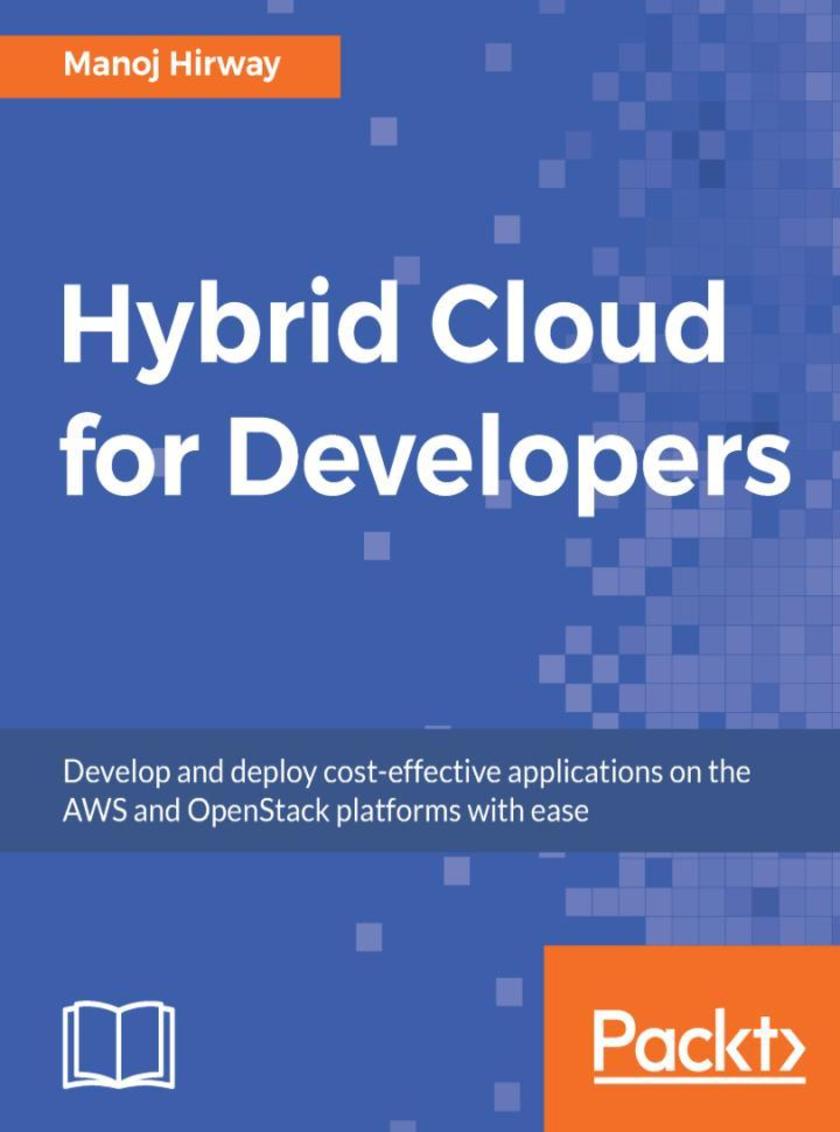
Hybrid Cloud for Developers
¥73.02
Develop and manage applications on the AWS and OpenStack platforms with this comprehensive learning guide. About This Book ? A step-by-step guide to help you develop applications on the hybrid cloud platform. ? Acquire an in-depth understanding of the OpenStack and AWS cloud platforms. ? Extensive source code examples for OpenStack and AWS applications. ? Easily troubleshoot OpenStack and AWS issues. ? Understand the best practices and security measures for the hybrid cloud platform. Who This Book Is For If you are an IT professional, developer, or a DevOps engineer looking to develop and manage your applications on the hybrid cloud platform, then this book is for you. Some prior knowledge of the public and private cloud will enhance your skills. Developers looking to build applications using AWS or OpenStack services will also benefit from this book. What You Will Learn ? Understand the hybrid cloud platform ? Explore the AWS and OpenStack cloud platforms in depth ? Develop AWS applications with source code examples ? Develop OpenStack applications with source code examples ? Troubleshoot OpenStack and AWS ? Learn hybrid cloud best practices ? Understand security measures on the hybrid cloud In Detail This book introduces you to the hybrid cloud platform, and focuses on the AWS public cloud and OpenStack private cloud platforms. It provides a deep dive into the AWS and OpenStack cloud platform services that are essential for developing hybrid cloud applications. You will learn to develop applications on AWS and OpenStack platforms with ease by leveraging various cloud services and taking advantage of PaaS. The book provides you with the ability to leverage the flexibility of choosing a cloud platform for migrating your existing resources to the cloud, as well as developing hybrid cloud applications that can migrate virtual machine instances from AWS to OpenStack and vice versa. You will also be able to build and test cloud applications without worrying about the system that your development environment supports. The book also provides an in-depth understanding of the best practices that are followed across the industry for developing cloud applications, as well as for adapting the hybrid cloud platform. Lastly, it also sheds light on various troubleshooting techniques for OpenStack and AWS cloud platform services that are consumed by hybrid cloud applications. By the end of this book, you will have a deep understanding of the hybrid cloud platform and will be able to develop robust, efficient, modular, scalable, and ?exible cloud applications. Style and approach This book follows a practical approach to become familiar with the AWS and OpenStack platform from a developer's perspective.
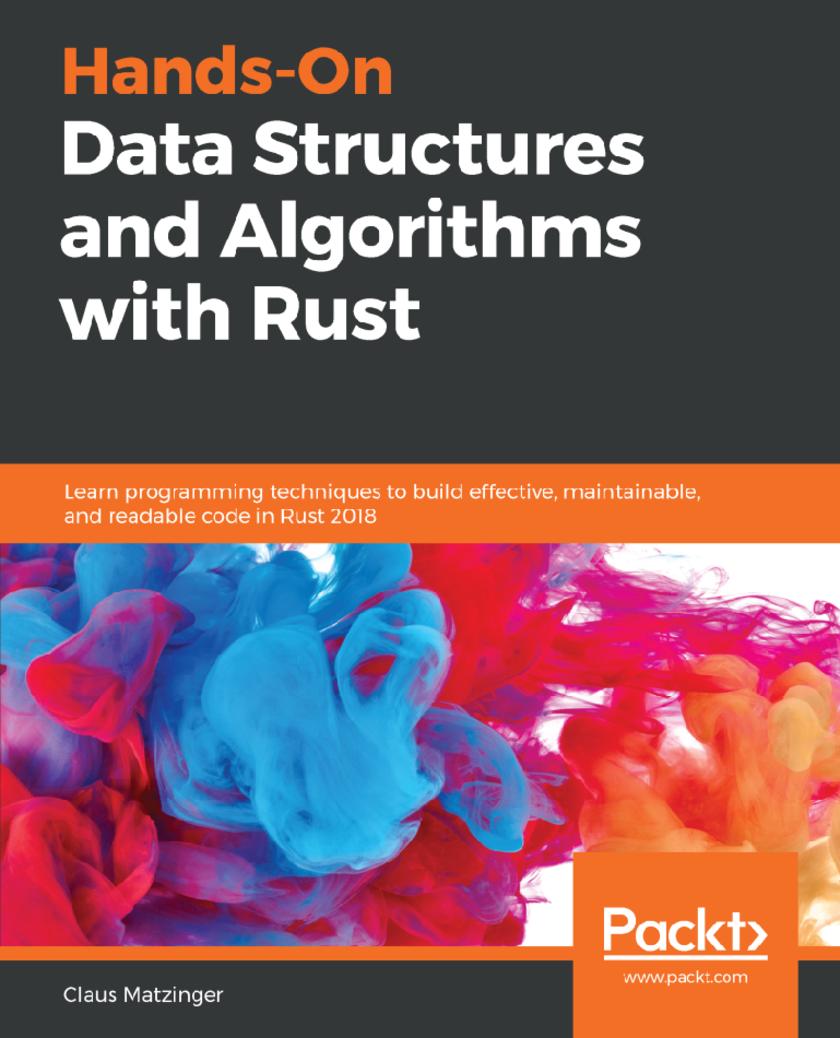
Hands-On Data Structures and Algorithms with Rust
¥73.02
Design and implement professional level programs by exploring modern data structures and algorithms in Rust. Key Features * Use data structures such as arrays, stacks, trees, lists and graphs with real-world examples * Learn the functional and reactive implementations of the traditional data structures * Explore illustrations to present data structures and algorithms, as well as their analysis, in a clear, visual manner. Book Description Rust has come a long way and is now utilized in several contexts. Its key strengths are its software infrastructure and resource-constrained applications, including desktop applications, servers, and performance-critical applications, not forgetting its importance in systems' programming. This book will be your guide as it takes you through implementing classic data structures and algorithms in Rust, helping you to get up and running as a confident Rust programmer. The book begins with an introduction to Rust data structures and algorithms, while also covering essential language constructs. You will learn how to store data using linked lists, arrays, stacks, and queues. You will also learn how to implement sorting and searching algorithms. You will learn how to attain high performance by implementing algorithms to string data types and implement hash structures in algorithm design. The book will examine algorithm analysis, including Brute Force algorithms, Greedy algorithms, Divide and Conquer algorithms, Dynamic Programming, and Backtracking. By the end of the book, you will have learned how to build components that are easy to understand, debug, and use in different applications. What you will learn * Design and implement complex data structures in Rust * Analyze, implement, and improve searching and sorting algorithms in Rust * Create and use well-tested and reusable components with Rust * Understand the basics of multithreaded programming and advanced algorithm design * Become familiar with application profiling based on benchmarking and testing * Explore the borrowing complexity of implementing algorithms Who this book is for This book is for developers seeking to use Rust solutions in a practical/professional setting; who wants to learn essential Data Structures and Algorithms in Rust. It is for developers with basic Rust language knowledge, some experience in other programming languages is required.
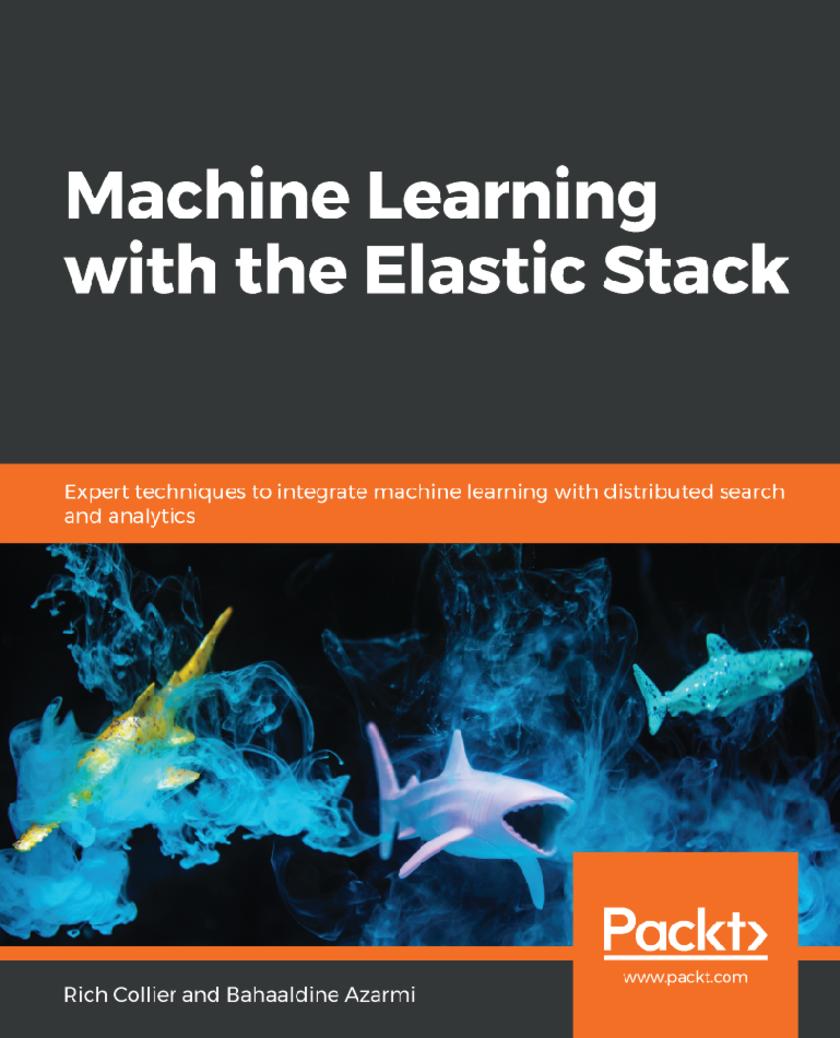
Machine Learning with the Elastic Stack
¥73.02
Leverage Elastic Stack’s machine learning features to gain valuable insight from your data Key Features * Combine machine learning with the analytic capabilities of Elastic Stack * Analyze large volumes of search data and gain actionable insight from them * Use external analytical tools with your Elastic Stack to improve its performance Book Description Machine Learning with the Elastic Stack is a comprehensive overview of the embedded commercial features of anomaly detection and forecasting. The book starts with installing and setting up Elastic Stack. You will perform time series analysis on varied kinds of data, such as log files, network flows, application metrics, and financial data. As you progress through the chapters, you will deploy machine learning within the Elastic Stack for logging, security, and metrics. In the concluding chapters, you will see how machine learning jobs can be automatically distributed and managed across the Elasticsearch cluster and made resilient to failure. By the end of this book, you will understand the performance aspects of incorporating machine learning within the Elastic ecosystem and create anomaly detection jobs and view results from Kibana directly. What you will learn * Install the Elastic Stack to use machine learning features * Understand how Elastic machine learning is used to detect a variety of anomaly types * Apply effective anomaly detection to IT operations and security analytics * Leverage the output of Elastic machine learning in custom views, dashboards, and proactive alerting * Combine your created jobs to correlate anomalies of different layers of infrastructure * Learn various tips and tricks to get the most out of Elastic machine learning Who this book is for If you are a data professional eager to gain insight on Elasticsearch data without having to rely on a machine learning specialist or custom development, Machine Learning with the Elastic Stack is for you. Those looking to integrate machine learning within their search and analytics applications will also find this book very useful. Prior experience with the Elastic Stack is needed to get the most out of this book.




 购物车
购物车 个人中心
个人中心



